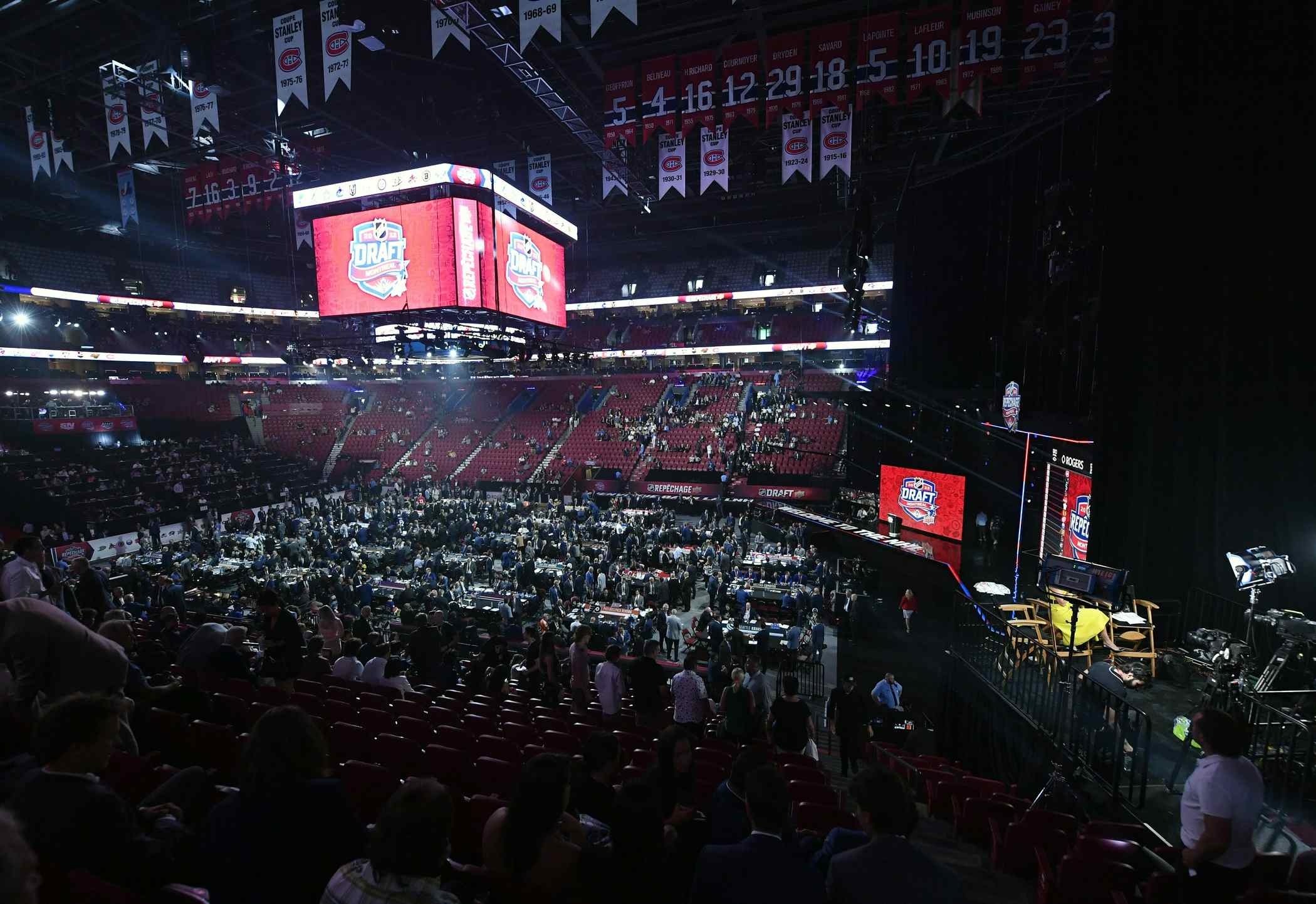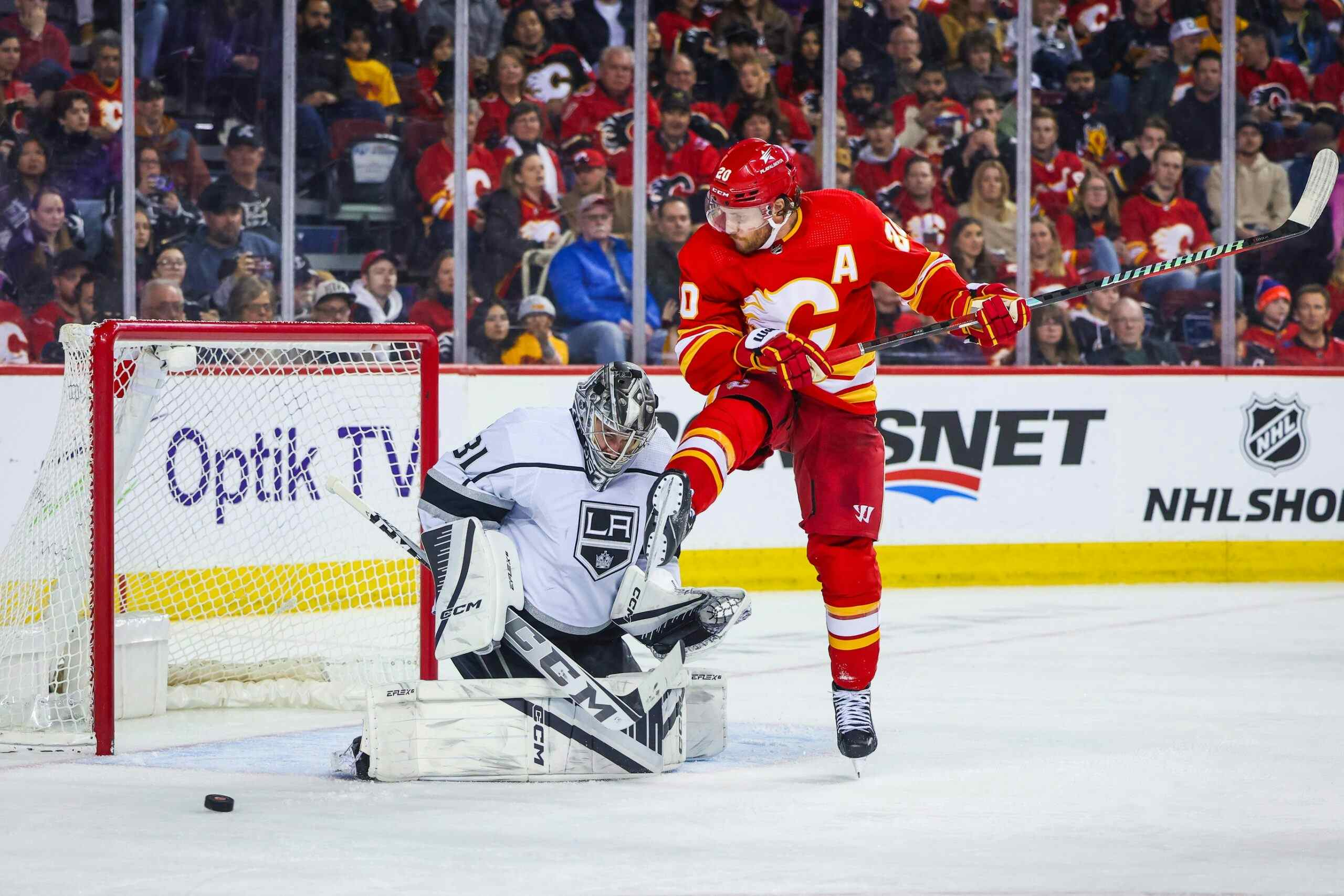A recent history of sixth overall picks
By Ari Yanover
7 years agoAnd so, the lottery has decreed: barring a trade, the Calgary Flames will be picking sixth overall in the 2016 NHL draft. It’s a position they’re familiar with, as recently as just three years ago; it’s also a position they’ve only once picked above, when they selected Sam Bennett fourth overall in 2014.
It varies from draft to draft, but this year, it’s the top three picks that are the big names. Last year it was the big two; the years before, the big four. Rarely do we see it stretch out to the big six.
But some pretty good players have gone sixth overall, and if the Flames do their due diligence, they’ll get a good player at sixth overall. Here’s who’s gone there in recent years.
2015 – LW Pavel Zacha
Pavel Zacha made the jump from playing in his home Czech Republic to the OHL’s Sarnia Sting for his draft year, where he scored 16 goals and 24 points through 37 games.
How did he do in his draft+1 season? Zacha posted 64 points in 51 games with Sarnia, leading the Sting in scoring. He also had 13 points through seven playoff games before being were bounced in the first round. From there, he made his NHL debut in the Devils’ season finale, picking up two assists. He also scored three points in the Albany Devils’ final three regular season games in the AHL. Currently he’s playing in the Calder Cup playoffs, in which he has three points in four games so far.
2014 – RW Jake Virtanen
Going into his draft year Jake Virtanen, an August birthday, was one of the youngest players available. He scored 71 points in 71 games for the Calgary Hitmen: third in team scoring. He had four points in six playoff games before the Hitmen were eliminated by the Kootenay Ice.
How did he do in his draft+1 season? Virtanen returned to the Hitmen, scoring 52 points in 50 games. He added another 13 points through 14 playoff games before the Hitmen were eliminated. Afterwards, he joined the Canucks’ AHL affiliate, the Utica Comets, for their playoff run, in which he scored one assist over 10 games. He made his NHL debut in his draft+2 season, scoring 13 points in 55 games for the Canucks.
2013 – C Sean Monahan
Sean Monahan led the Ottawa 67’s with 31 goals and 78 total points through 58 games in the 2012-13 season: 38 more points than his next closest teammate. Though his October birthday marked him as one of the older players of the draft, he was still clearly deserving of the spot he was taken.
How did he do in his draft+1 season? Monahan made the Flames out of camp, and scored 22 goals and 34 points through 75 games for a pretty solid rookie debut. He finished his season fifth in team scoring. Today he’s the top goal and point scorer of his entire draft class, so it’s clearly working out so far.
2012 – D Hampus Lindholm
The fourth defenceman taken in the 2012 draft, Hampus Lindholm was also the first European player selected. He spent his draft year playing in Sweden, including 20 games in the Allsvenskan during which he scored one goal and four points.
How did he do in his draft+1 season? Lindholm immediately made his way over to North America, playing for the Anaheim Ducks’ AHL affiliate, the Norfolk Admirals. He played 44 games for them, and scored 11 points over that time. (Side note: we have a slight comparable here with Oliver Kylington, in that they’re both Swedish defencemen who played in the AHL immediately following their drafting. Kylington scored 12 points through 47 games, for the record.) He made the jump to the NHL in his draft+2 season, scoring 30 points over 78 games and averaging 19:26 in ice time, and he hasn’t looked back since.
2011 – C Mika Zibanejad
Mika Zibanejad spent his draft year playing in his home country of Sweden, in which he scored five goals and nine points through 26 games for Djurgardens in Sweden’s top league.
How did he do in his draft+1 season? Zibanejad had a nine-game audition with the Ottawa Senators to start his season. He scored just one assist, and went back overseas to play out the rest of the year; he scored 13 points through 26 games for Djurgardens. He split time between the AHL and NHL in draft+2 year, and became a full-fledged NHLer early into his draft+3 year, and just broke the 50-point barrier for the first time in his draft+5 season.
2010 – RW Brett Connolly
Brett Connolly played just 16 games for the Prince George Cougars in his draft year. He scored 19 points. The season before, however, he played 65 games and scored 60 points.
How did he do in his draft+1 season? Connolly went back to Prince George, scoring 73 points over 59 games. He turned professional in his draft+2 season, but only scored 15 points through 68 games for the Tampa Bay Lightning. Thus far, he’s only had what one could reasonably call two full NHL seasons – plus a 50-game season – and his career high is 25 points.
2009 – D Oliver Ekman-Larsson
A July birthday, Ekman-Larsson was one of the younger players available in 2009. He played 39 games in the Allsvenskan in his draft year, scoring 17 points over 39 games.
How did he do in his draft+1 season? Ekman-Larsson stayed in Sweden, where he upped his scoring to 27 points through 42 games. He made the jump to North America in his draft+2 year; in his draft+3 year, he established himself as a regular NHL defender and was averaging at least 22 minutes a game.
2008 – LW Nikita Filatov
Nikita Filatov played five games in Russia’s top league and went scoreless; in a lower league, he had 47 points through 23 games.
How did he do in his draft+1 season? Filatov played mostly in the AHL, scoring 32 points in 39 games for the Syracuse Crunch. He also made his NHL debut, scoring four goals in his first eight games. However, he only played 53 total NHL games over four seasons; he’s spent the past five seasons playing in the KHL, most recently scoring just four assists over 26 games.
2007 – C Sam Gagner
With an August birthday, Sam Gagner was one of the youngest players available in 2007. He entered his draft year having scored 35 goals and 118 points over 53 games for the London Knights, adding an additional 29 points through 16 playoff games. That sounds elite enough, until you realize he was only third in scoring on that Knights team, at which point alarm bells should have been going off.
How did he do in his draft+1 season? Gagner immediately made the NHL, scoring 13 goals and 49 points through 79 games as a rookie. That was his career season; he has never again reached 49 points in the NHL.
2006 – C Derick Brassard
Born in late September, Derick Brassard was one of the oldest players available in the 2006 draft. He scored 44 goals and 116 points over 58 games in the QMJHL in his draft season: the leading scorer on his team by 33 points. He also had nine points in seven playoff games.
How did he do in his draft+1 season? Brassard went back to the Q, in which he was limited to just 14 games (and 25 points in them). He did add on another 24 points through 12 playoff games, however. He turned professional in his draft+2 season, scoring 51 points over 42 games in the AHL, as well as making his NHL debut with two points in 17 games. He’s only just started putting up big numbers the past couple of seasons, however, with 60 and then 58 points for the New York Rangers in his draft+10 and draft+11 years.
What’s the verdict?
Of the past 10 sixth overall picks, eight have been forwards. Filatov was a flat out bust, while Connolly appears he might be headed down the same path. Depending on your expectations for a sixth overall pick, Gagner and Brassard may have been weaker choices, as well; Gagner has more bigger names immediately following him in his draft class than Brassard does.
Zibanejad is rounding into form, while it’s much too early to judge the Zacha pick (and perhaps the Virtanen one as well, although a number of other 2015 first rounders – Nikolaj Ehlers, Dylan Larkin, Robby Fabbri, Jared McCann, David Pastrnak, and even William Nylander [who has the same number of points as Virtanen, but in 33 fewer games played] have already passed him in point totals). Monahan, meanwhile, is doing pretty well.
Assuming the Flames pick a forward at sixth overall – and with one of Matthew Tkachuk, Pierre-Luc Dubois, and Alexander Nylander guaranteed to be available, it’s certainly likely – the past decade seems to dictate they’ll get a good, but not necessarily great, player. Recent history also dictates he likely won’t make his NHL debut until his draft+2 season.
Of course, not all draft classes are created equal; but as far as sixth overall picks go, Monahan appears to be more an exception than the rule.
Recent articles from Ari Yanover





